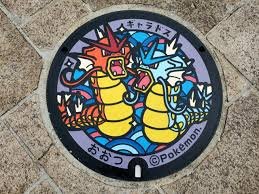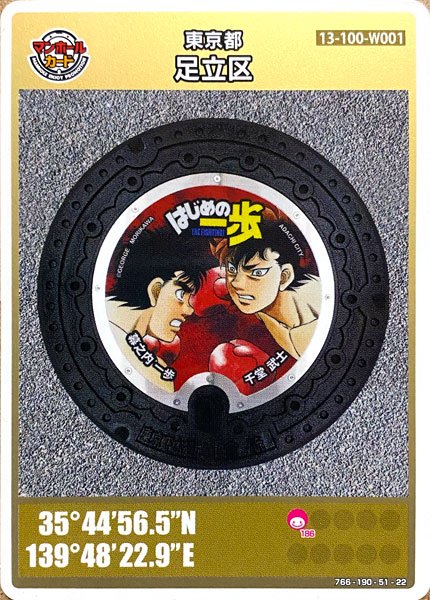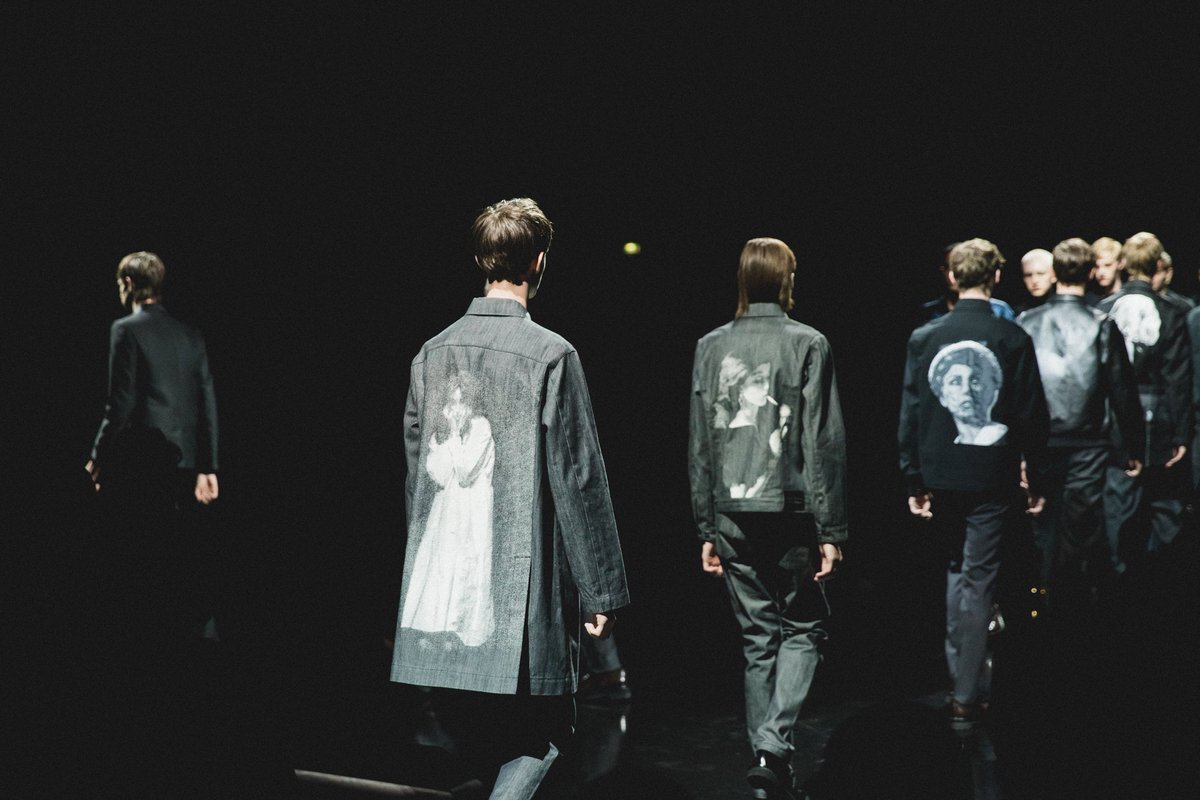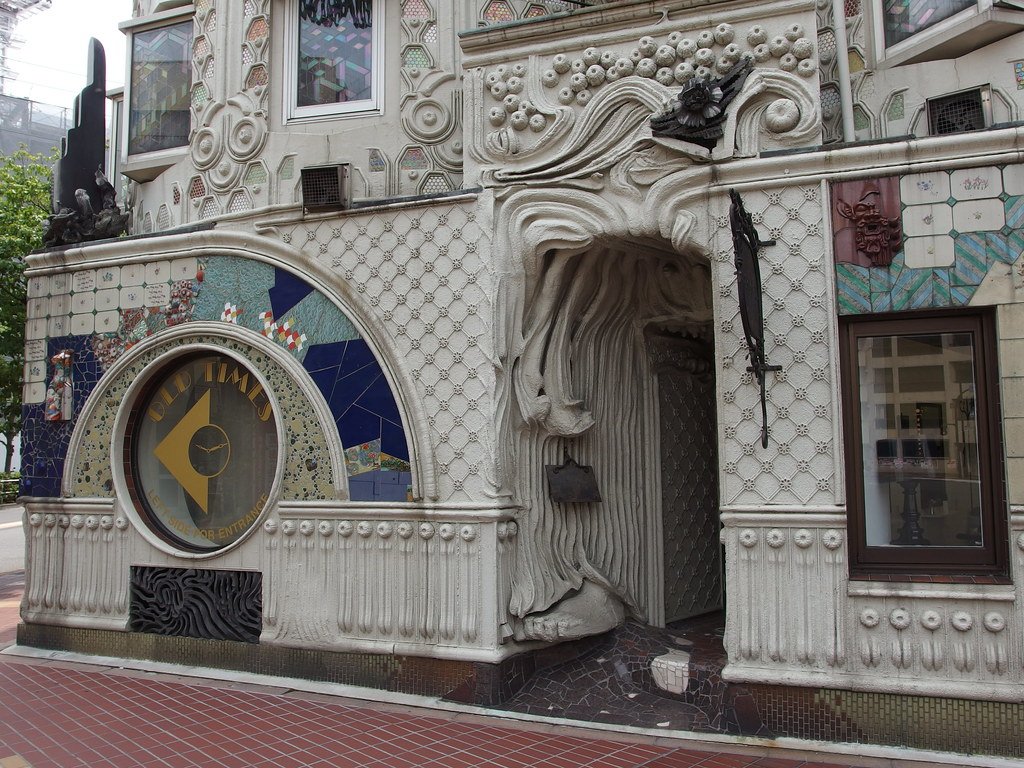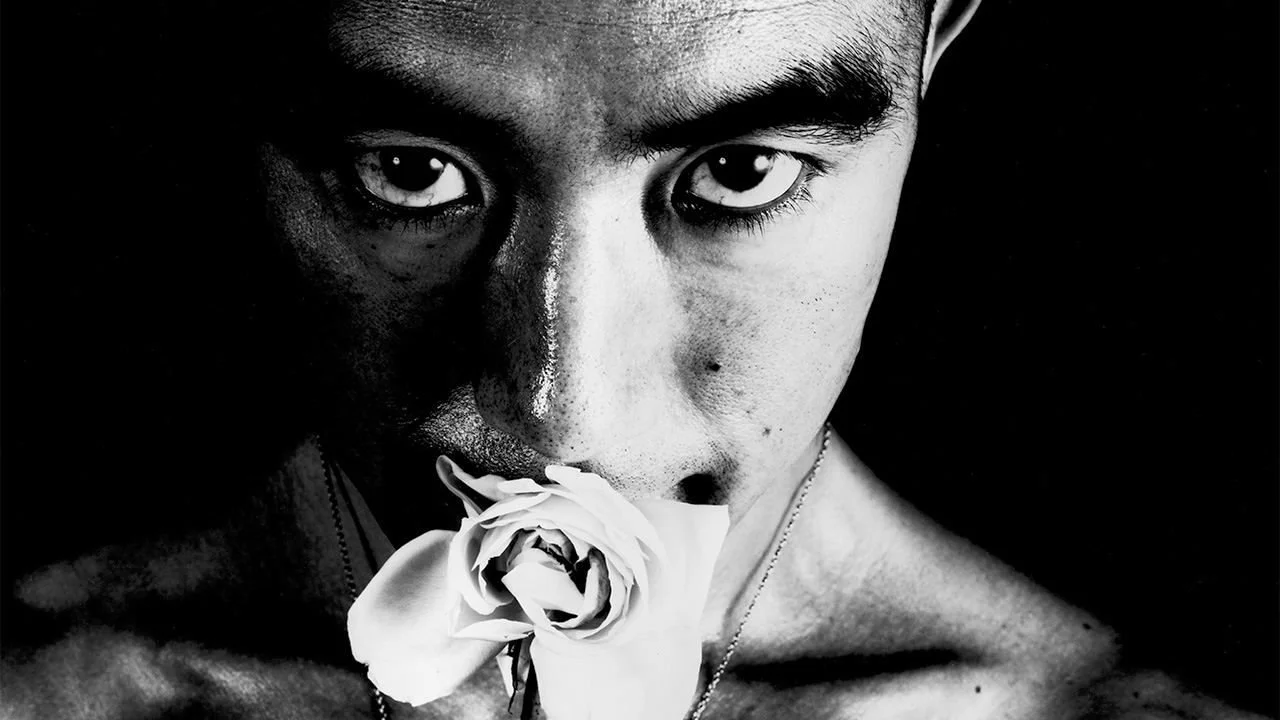Japan's Unique Manholes: Pieces of Art At Your Feet

Let’s create a sewage system, but please make it all kinds of kawaii.
That might just as well have been the internal brief when the Japanese government began rolling out its new sewage system after World War II. In a PR move that could probably not exist in any other country, intricately designed manholes were thought to be the best measure to garner the population’s support for the large infrastructural changes. Nowadays about 12,000 different manhole designs are said to decorate municipalities across the country – featuring folktales, local history, landmarks, mascots, you name it. If drainspotting isn’t one of your favorite leisure activities yet, let us show you why you should consider joining Japan’s wacky community of manhole lovers.
Motifs range from traditional flowers and historic themes to pop culture references and kawaii designs featuring local specialties such as RX-7-8-2 GUNDAM
First of all, manholes are a typical example of how Japanese officials nicely wrap government decisions to make them palatable, averting possible resistance from the population by emphasizing admiration for artisan pride and fun with kawaii messaging. While the renewal of the sewage system had begun in the 60s, sources usually point to one no-name government official as the unknown mastermind behind today’s manhole craze. Urban myth has it that around the mid-80s he suggested colorfully designed manholes to raise awareness as well as taxpayer’s acceptance for the costly redevelopment projects, which surely interrupted their neighborhood peace with noisy construction sites.
Even today municipalities regularly invite citizens and schoolchildren to design manholes, for example Saitama prefecture in 2021 to celebrate the prefecture’s upcoming 150th anniversary [left to right: elementary school kid design, middle school, 19 years and older]
Thanks to government-initiated design contests early on, municipalities were soon competing with each other to see who could draw more attention and tourists to their regions – a competition that still goes on today. And it’s a rather costly one: elaborately colored design manholes can cost around $1000 a piece as opposed to an average mass-produced standard lid which is said to lie at around $10. Today nearly 95% of the 1,780 municipalities in Japan reportedly sport their very own customized manhole covers.
Hello Kitty inviting tired Tokyoites to enjoy the nature in Tama City on a bike
Tokorozawa, the birthplace of Japan’s aviation industry, uses manholes to highlight the city’s commitment to become a carbon-neutral city by 2050
So one should not underestimate the cultural meaning of manholes as they let spotters dive deeply into the shaping of Japan’s national identity inward and outward, a process that has been ongoing intensely since its opening to the West in the 1860s. On the one hand we have the government consistently making an effort to present the country as a homogenic, smoothly operating society with its economical and political power centralized in Tokyo. Yet, looking deep inside the 47 prefectures and more than 6800 islands, the truth is that Japan boasts regional differences in culture, language, food and climate. All of which is condensed even into a banal object like a manhole cover.
Okinawan manhole featuring its region-specific guardian spirit shisa
A classic depiction of Mount Fuji with cherry blossoms
The association between place and local specialties is in fact well established in Japanese culture. As soon as the mid-sixteenth century, elite children learned about places and their best-known products or meibutsu [literally meaning ‘famous things’]. Back then geographical textbooks “taught popular piety toward the land, even as they introduced children to economic values, and perhaps, the lure of consumption.” Art historian Terry Satsuki Milhaupt notes that the latter probably also explains why commercial directories of cities were published in the form of self-guided shopping tours as early as the 1670s, listing a shop’s address and products – and even today you can’t really go back home without a local souvenir [omiyage].
Hiroshima Toyo Carp’s “Carp Boya” with Hiroshima’s Signature Maple Leaves [Momiji].
Numerous online communities and specifically designed search engines help drainspotters find the hottest holes – pun intended, guys – all over Japan to gaze at, photograph and share with others. Pages like the ‘Japanese Society of Manhole Covers’ or the ‘Art gallery on the streets’ register newly installed manhole designs almost in real time, categorized by prefectures or designs and featuring the background story as well the exact geographical location. There are even printed almanachs on the market such as ‘Japan’s manholes’ by retired Tokyo Metropolitan Government official Hidetoshi Ishii who has logged over 4,500 lids on cycling excursions to 1,700 Japanese towns and cities.
Manhole spotting legend Dr. Hidetoshi Ishii
And, of course, Japan wouldn’t be Japan if it didn’t also produce tons of merch that keep hobby drainspotters actively traveling the country and boosting the economy. Collectible drainspotting cards are a thing and seem to have become a customary by-product released immediately upon the installation of new design manholes.
Manhole afficionados never fail to share pics of their card collection with the manhole visited in person, of course
One of the most recent examples of a noteworthy design manhole was just introduced this January in Tokyo’s Adachi-ku hood. The new lids honor Adachi-born manga artist George Morikawa, known for his long-running boxing-themed series ‘Hajime no Ippo’ which was first published in 1989. The above-mentioned ‘Art gallery on the streets’ didn’t fail to send a drainspotter covering the revelation of the new lids as well as the design story behind it.
Another craze you should not miss out on are the so-called ‘Poke lids’ [pokefuta]. The world’s most favorite pocket monsters can be spotted all over Japan and thanks to an in-depth online database available in English, Korean and Chinese, fans will be able to track down every single one of them.
There are even downloadable coloring book pages and, you guessed it, tons of Pokémon manhole merch, from keychains to coasters. Sponsored by the copyright owning company itself, the one-of-a-kind manhole covers are part of a campaign to encourage tourism to lesser-known areas of Japan while doubling as Pokestops for the augmented-reality game Pokémon Go.
Gamification to keep the sewage system intact.
Gamification is also implemented by local governments themselves to engage citizens in the maintenance of its aging infrastructure. Remember, the current sewage system dates back to the 60s-80s, so today more than 3 million out of about 14 million manholes nationwide are aging and, thus, eroding the life-supporting infrastructure underneath roads. As the amount of manholes that need to be checked for anomalies is simply too large to handle for government officials and contractors, the Tokyo government launched the game "Iron and Concrete Guardian" last year. Citizens simply register via instant messaging app LINE and start shooting & posting manhole covers all over the city eyeing at prizes as high as 1 million yen.
So, what do you say: ready to spot Japan’s countless holes?
Text By: Jen Duermeier is a brand communicator by day and a polyglot writer by night. She’s obsessed with Japanese fashion, photography, variety TV and all things Shōwa. Never not thinking about moving back to her hood in Adachi-ku, she is always looking for good excuses and collaborations to go back and forth between Tokyo & Munich.


